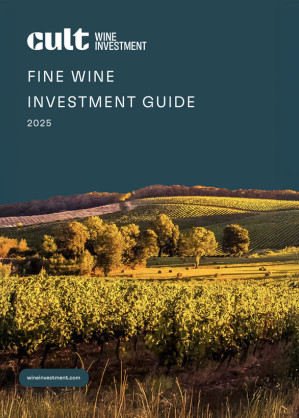
How to Describe Wine Like a Pro
With the vast array of wine styles available, the vocabulary used to describe them is equally extensive, encompassing everything from 'acidic' to 'zesty.' While casual wine enthusiasts might rely on basic descriptors, wine experts and sommeliers employ a rich lexicon to convey the subtle nuances of the wines they taste.
Understanding these terms can enhance your appreciation and communication of wine's complex characteristics. Here are key terms that will help you describe wine like a connoisseur, each illustrated with an example sentence.
The Importance of Wine Vocabulary
Describing wine accurately is not just about sounding knowledgeable; it's about communicating the sensory experience of wine tasting. This vocabulary allows enthusiasts to share their experiences and preferences, aids sommeliers in recommending wines, and helps winemakers convey the unique attributes of their products. By mastering these terms, you can enhance your enjoyment of wine and engage more deeply with the community of wine lovers.
Key Wine Descriptors
Acidity:
Acidity is crucial in wines, especially whites, as it imparts freshness and zing. High-acid wines are refreshing, crisp, and mouth-watering, enhancing the overall drinking experience.
"The Sauvignon Blanc's bright acidity made it incredibly refreshing on a hot summer day."
Angular:
An angular wine, as described by Wine Folly, is like having a triangle in your mouth – it hits specific points with high impact and not others. These wines typically have very high acidity and are the opposite of ‘soft’ wines.
"The Riesling was angular, hitting sharp notes on my palate with a striking intensity."
Aroma:
Also known as the ‘bouquet,’ aroma refers to the smell of a wine commonly used for older wines. Typical aromas include fruit, herbs, flowers, earth, grass, tobacco, mocha, and chocolate.
"The Pinot Noir's aroma was rich with notes of cherry and a hint of tobacco."
Backbone:
A wine with a backbone is full-bodied, well-structured, and balanced, indicating a robust composition that supports its flavours and texture.
"The Cabernet Sauvignon had a strong backbone, with firm tannins and a well-structured body."
Balance:
A balanced wine has its main components – fruit, alcohol, and acid – in harmony. For red wines, tannins are also considered. Balance is often seen as a positive attribute, suggesting a well-crafted wine.
"The Merlot's balance was impeccable, with just the right amount of fruit, acid, and tannins."
Body:
Body refers to the weight and viscosity of wine on the palate. Full-bodied wines have intense textures and flavours, medium-bodied wines offer a balanced middle ground, and light-bodied wines are refreshing and tingly. Think of it like the difference between whole, semi-skimmed, and skimmed milk.
"The Chardonnay was full-bodied, coating my palate with its rich and creamy texture."
Complex:
A complex wine changes flavour from the moment it touches your tongue to the moment you swallow. It's multifaceted but using the term without explanation can be seen as a shortcut.
"The Syrah was incredibly complex, with layers of dark fruit, spice, and earthy undertones evolving with each sip."
Earthy:
Earthy wines have a flavour profile that can be either a pleasant, clean complexity or an unfavourable ‘barnyard’ character. The term can imply both positive and negative attributes depending on the context.
"The Bordeaux had a pleasant earthy quality, reminiscent of fresh soil and truffles."
Elegant:
Elegant wines are understated with higher acidity and restrained characteristics, often described as ‘tight’ when young but with good ageing potential. They are the opposite of bold and fruity wines.
"The Chianti was elegant, with delicate floral notes and a subtle, refined finish."
Finish:
The finish is the aftertaste of a wine, which can significantly affect the overall tasting experience. A wine may have a smooth, smoky, or spicy finish, among others. A lingering aftertaste indicates a long finish.
"The Shiraz had a long finish, leaving a lingering hint of pepper and dark chocolate on my palate."
Flavour Intensity:
This term measures how strong or weak a wine's flavours are. It’s crucial for pairing wine with food and helps in identifying personal wine preferences.
"The Malbec's flavour intensity was powerful, making it a perfect match for the hearty steak."
Legs:
Legs are the streaks that form on the inside of a glass when the wine is swirled. They indicate the alcohol content – the more prominent the legs, the higher the alcohol.
"The Zinfandel had thick legs, indicating its high alcohol content."
Lively:
Lively wines are fresh, fruity, bright, and vivacious. They exude an energetic and vibrant quality.
"The Champagne was lively, bursting with bubbles and vibrant citrus notes."
Minerally:
Minerally wines have flavours reminiscent of non-fruit, non-herb, and non-spice elements, like forged iron, stone, or wet cement. These flavours offer a distinct, tangy profile.
"The Chablis was minerally, with a refreshing crisp, almost saline quality."
Oaky:
Oak significantly influences a wine's flavour, imparting butter and vanilla notes to white wines and smoky, toasty notes to red wines. Wines lacking these characteristics are termed ‘unoaked,’ often leading to zestier whites and tarter reds.
"The Chardonnay's oaky notes of vanilla and butter complemented its full-bodied texture perfectly."
Rich:
Rich wines are full-flavoured, sweet, and rounded. In dry wines, richness might come from high alcohol content, complex flavours, or an oaky vanilla character. Sweet wines are rich when backed by fruity, ripe flavours.
"The Port was rich, with intense sweetness and layers of ripe berry flavours."
Tannic:
Tannins are vital in red wines. They can taste bitter on their own but vary in effect based on their integration with other wine components. Descriptions include ‘astringent’ (high tannins, harsh feel), ‘firm’ (moderate tannins, dry feel), and ‘soft’ (low tannins, smooth feel).
"The young Barolo was quite tannic, leaving a firm, dry sensation on my palate."
Zesty:
Zesty wines, like Sauvignon Blanc and Pinot Grigio, have lively, crisp qualities with noticeable acidity and citrus notes, making them particularly refreshing.
"The Pinot Grigio was zesty, with citrus notes that danced on my tongue."
Practising Wine Descriptions
To become proficient in describing wines, practice is essential. Here are a few tips:
- Taste Regularly:The more wines you taste, the better you'll understand and recognise different characteristics.
- Use a Wine Journal:Record your tasting notes, focusing on the descriptors mentioned above. Note the aroma, body, finish, and other qualities.
- Attend Tastings:Participate in wine tastings to expose yourself to a variety of wines and hear how others describe them.
- Join a Wine Club:Engage with other enthusiasts to discuss and compare notes, enhancing your descriptive skills. Read the Cult Wines Guide to UK Wine Clubs.
- Pursue Education Through Qualification:Enrol in a WSET (Wine & Spirit Education Trust) course to gain a structured education on wine. These qualifications can help you use wine descriptors and deepen your understanding of wine tasting.
The Impact of Terroir
Terroir, a French term describing a vineyard's unique combination of climate, soil, and geography, significantly influences a wine's characteristics. For example, a Chardonnay from Chablis's cool, mineral-rich soils will differ markedly from one grown in the warmer, oak-influenced regions of California. Understanding terroir can deepen your appreciation of the subtleties in wine.
The Influence of Ageing
The ageing process also impacts a wine’s profile. Young wines might be more vibrant and fruitier, while aged wines develop more complex aromas and flavours, such as leather, dried fruit, and earthy notes. Knowing how ageing affects wine can help you better describe and appreciate the evolution of its characteristics.
By incorporating these terms and tips into your wine-tasting experiences, you can articulate your findings with the finesse of a professional, capturing the intricate characteristics and nuances that define each wine. This deeper understanding not only enhances personal enjoyment but also allows you to communicate more effectively with other wine enthusiasts.

Fine Wine Investment Guide 2025
Download your guide to fine wine investing and discover how this unique, tangible, and tax-efficient asset can enhance portfolio diversification. Gain valuable knowledge and insights with this indispensable document for investors.



